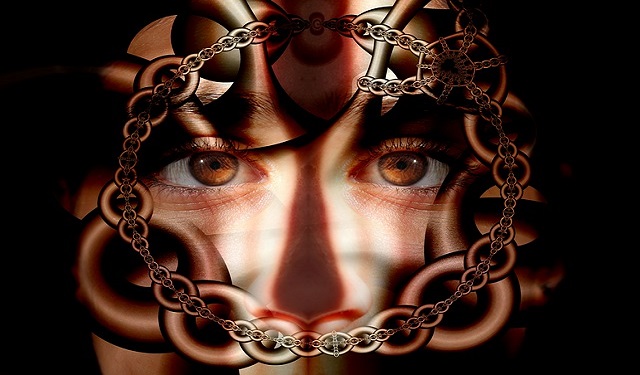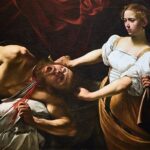
The growing development and constant modernization of the media throughout the ages have been discernibly significant as the inescapable exposure to various media outlets and formats continues to peak consistently. The powerful and steadily expanding manifestation of the media is evident within literary texts as well and carries along with it a plethora of new modern meanings and effects on the plot and characters.
This essay will demonstrate how the media holds an increasingly more important role in three different novels that feature paranoid protagonists at their center in three different periods; and, consequently, will illustrate how the media functions as an enhancer of paranoia and as a more significant plot catalyst in each novel from a later period.
The three novels that will be examined in chronological order are J. M. Coetzee’s Foe, whose plot is set in the eighteenth century; Vladimir Nabokov’s Pale Fire, whose plot is set in the late 1950s; and Philip Roth’s Operation Shylock, whose plot is set in the late 1980s. All three novels are first-person narratives that revolve around a protagonist whose mental state is at least somewhat questionable and paranoid – an unstable psychological condition that is increasingly worsened and exacerbated by the effects of the media according to the historical period in which the narrative takes place.
It is first essential to understand the general connection between paranoia and the media. The paranoid mental state was first medically recognized and diagnosed in the early nineteenth century in Europe (Schifferdecker and Peters, 1995); coincidently or not, those were also the times when the mass high-circulation of European newspapers had commenced (Nerone, 2003). Whether or not there is a direct link between the recognition of a paranoid state and the burgeoning of the mass media, it seems that, in any event, a relationship between the two has been formed and cultivated.
Researchers have already discovered that “radical and generalized manifestation of distrust” has connections to modernity, and they further established that “modern media play a crucial role in [the distrust’s] proliferation in the West”; in addition, it appears that “conspiracy culture” is profusely disseminated and augmented by the modern media as “progressive modernization in fact motivates the appeal and popularity of paranoid narratives” (Aupers, 2012). Other studies indicate that although paranoia did exist prior to modern times, forces of social change and “agencies deploying images and information” that became visible in the eighteenth century made it “almost natural to feel caught in a system with a logic and intentions of its own” (Farrell, 2006).
During the eighteenth century, the novel had been one of the predominant and vital mediums to communicate information to the masses as a combination of educational, social and economic shifts led to the eighteenth century’s “rise of the novel” (Watt, 1957); hence, novels could be referred to as one of the main media agencies of that time. It is thus safe to conclude that the media at least fairly contribute to the propagation and intensification of the paranoid state among susceptible people who are inevitably subject to the means of publication and broadcast of a particular era.
Media Paranoia in J. M. Coetzee’s Foe
The plot of Foe occurs at some point in the eighteenth century, which is quite easy to determine once the narrator Susan Barton retells about her encounters, first with Friday and soon thereafter with Robinson Cruso – both are characters from the famous eighteenth-century novel Robinson Crusoe. Even within an entirely fictional world, referencing other fictional characters from a different, highly reputable novel immediately raises at least some doubts about the narrator’s state of mind and that these sort of fictional rendezvous might not be a mere media spin-off but perhaps a psychological disturbance of the narrating protagonist. Additionally, the fact that the plot of Foe begins right away within a paranoid setting such as a desert island, just as in the general plot of Robinson Crusoe, only supplements those initial doubts. Thus, the connection between the media and paranoia is budded promptly by the mere reference of Friday and Cruso – at least to a certain degree – at the beginning of Foe.
Interestingly, the initial recognizing references to Robinson Crusoe’s Friday and Cruso in Foe are mentioned offhandedly, almost as footnotes, even though they are clearly known literary characters whose identification is vital and not less important, exciting to the readers. The first person whom Barton meets when she reaches the island is Friday, and initially, she simply refers to him as “the Negro”; when Barton does first choose to introduce his name, she indifferently relates to him indirectly in a possessive form, “Friday’s hard skin” (Part I).
The readers do not receive a better introductory identification of the famed Cruso. Barton mentions Cruso by name for the first time in nothing more than a mere baffling remark in parenthesis, “who was of course the Cruso I told you of” (Part I). Although the introduction of acclaimed literary figures such as Friday and Cruso by name would have been expected to be ostentatiously conspicuous, their actual presentations in Foe do not meet such honor.
The gap between Friday and Cruso’s notability and their meager introductions can be explained by Barton’s paranoid worries throughout the novel that someone else would hijack her own prominence from her own possibly public story. One indication that supports such a claim is that Barton mentions the phrase “my story” no less than fourteen times in the text, which may point to profound control-related anxieties. Furthermore, Barton explicitly writes to Mr. Foe that she is worried that in the ultimate publication of the story, she would become “a being without substance, a ghost beside the true body of Cruso,” and immediately thereafter, she remarks that she was yet “as much a body as Cruso” (Part II, April 20th) – a statement that markedly emphasizes her anxieties. In a later conversation with Foe, Barton expresses her desire for control by affirming that it is in her “power to guide and amend. Above all, to withhold,” and moreover, that she “endeavor[s] to be father to [her] story” (Part III).
All of these cues can elucidate why Barton decides to belittle the introductions of Friday and Cruso, the famous Robinson Crusoe characters; these cues also draw a connecting line between the media, which is represented by Barton’s longed-for publicized story, and her exacerbated paranoia.
Another aspect that seems to aggravate Barton’s paranoid worries about her possible publicized story is quite a banal one: money. Barton exhibits her dire relation to money pretty early in the text during a completely unrelated discussion with Cruso in which she asserts that he speaks about language as “one of the banes of life, like money or the pox” (Part I); this proclamation inadvertently indicates her weighty concerns about money and probably not much luck with it in her lifetime. Barton also conjoins her desire for publicity with money when she attempts to persuade Foe to write her story and claims to him that she is “a figure of fortune … the good fortune we are always hoping for” (Part II, April 15th).
A more explicit indication that, for Barton, fame and riches are coupled can be found in her statement to Friday that their story will make them “famous throughout the land, and rich too” (Part II, April 21st). In fact, on one occasion, Barton’s worries about money even surpass her want to tell her true story: when she begins to understand that her true story may not be enough for commercial success, she tells Friday – and possibly herself too – that they “will never make [their] fortunes … by being merely what [they] are, or were,” and later on she tells him – and again, possibly herself – to let them “only grow rich” (Part II, June 1st).
Money as a source of worries and even paranoia was, of course, nothing new in the eighteenth century, a period when modern capitalism was already fully materialized (Burnham, 2003); yet for Barton, it is affixed to her compulsion to publicize her story, which results in an intensifying paranoid state that even propels Barton to consider abandoning one of her most desirable wishes – to tell her true story.
The power of the media in the eighteenth century – when the plot of Foe takes place – was still relatively limited and undeveloped, and yet it holds a notable influence on the novel’s protagonist, who craves to make her true story and experiences commercially public.
Media Paranoia in Vladimir Nabokov’s Pale Fire
In the late 1950s – when the plot of Pale Fire is set – the familiar modern channels of the mass media such as radio, commercial television and the film industry already became the chief conduits to transmit knowledge and information for the greater part of society, and they were even regarded as means of mass control (Lorimer and Scannell, 1994). It is not a surprise, then, that Pale Fire carries a bountiful of varied media references and, more importantly, that the media is considerably influential on the characters of the novel; on top of all, the media reinforces the paranoia of Pale Fire’s protagonist, Charles Kinbote, who to begin with is already unstable.
Pale Fire is not written and structured the same way as the traditional novel is, and in fact, the novel’s exceptional style and format embody how the media is an intrinsic part of it. The novel is built as a supposedly soon-to-be-published poem by John Shade, whose editor is Charles Kinbote, who intends to publicize it as an edition that includes a Foreword, the poem divided into four cantos, a Commentary section by Kinbote, and an Index. The actual plot itself is incorporated within the various sections of this allegedly prearranged-for-publishing poem, mostly within the Foreword and the Commentary. This fictional publication is, of course, entirely part of the fictional world that is wholly the creation of the one real writer of all, Vladimir Nabokov, which is already proof by itself of the inherent and central role the media has in the novel, even without beginning to analyze its actual content. The mere fact that Nabokov designed the novel as a fictitious elaborate publication demonstrates how the power of the media is infused within it.
The entire narrative of Pale Fire is built upon John Shade’s poem from which Kinbote, the first-person narrator, relates the story – although his narration, for the most part, is not connected to the poem whatsoever. The media publishing rights of John Shade’s poem are the primary source of dispute between Kinbote and John Shade’s wife, Sybil, which distinctly aggravates his paranoid mental state.
Kinbote first insinuates in the Foreword – and ultimately, fully divulges in the Commentary to Line 1000 – that immediately after the death of John Shade, he manipulates “his distraught widow” into “signing an agreement” that essentially gives him the publishing rights of the poem, and to her the ensuing profits. Thenceforth, other people suspect that Kinbote did not obtain her signature legitimately, such as Shade’s former lawyer, who refers to Kinbote’s actions as “a fantastic farrago of evil” (Foreword). Kinbote also reveals that Shade’s wife eventually requested him “to accept Prof. H. (!) and Prof. C (!!) as co-editors of her husband’s poem,” which prompts Kinbote to completely disconnect his “collaboration” with her (Foreword).
In addition, former colleagues at the University where Shade and Kinbote used to work issue a “mimeographed letter,” specifying that Kinbote is “unqualified for the job of editing” the poem, that he is “known to have a deranged mind,” and suggesting a “legal action” against him (Commentary, Lines 376-377). This strife results in an exacerbated paranoia of Kinbote, who retells that he “was forced to leave New Wye” to “a new incognito in quieter surroundings”; these quieter surroundings are depicted by Kinbote later on as a “cave in Cedarn” (Foreword) and as a “bookless mountain cave” (Commentary, Line 376) without any further explanation – a strong signal for Kinbote’s aggravated paranoia. If so, the media-related contention appears to intensify Kinbote’s paranoid state, who already impressed the people around him as mentally unsettled before that.

Similar to Foe’s Barton, Pale Fire’s Kinbote also exhibits disturbances regarding his attraction to media prominence, which drives him deeper into his delusional paranoia. The first distinct indication of Kinbote’s attraction to renown is when he describes how “elated” he was to discover that he became a neighbor of “the celebrated American poet whose verses [he] had tried to put into Zemblan two decades earlier” (Foreword); this admission is quite disturbing when considering that Kinbote presumably hallucinates his entire tale of Zembla and, accordingly, there is no such language as Zemblan.
Kinbote’s distorted allure of notability enhances as he begins “seeing more and more of [his] celebrated neighbor,” and thereupon, he compulsively starts to spy on him without even slightly noticing his obsessive derangement – Kinbote casually divulges that “almost every evening [he] could see the poet’s slippered foot gently rocking” (Foreword) as if this sort of aberrant behavior is utterly rational. When Kinbote does subsequently acknowledge his “loneliness and distress” and that “[s]olitude is the playfield of Satan,” he promptly deflects the narrative again towards his “famous neighbor just across the lane”; later on, he frantically wishes for the “poet’s suffering another heart attack” just so he could visit him at his house and console him (Commentary, Line 62). It is not unusual for people to attempt to get closer to their subject of fame, but for an unstably paranoid character as Kinbote, it evidently appears to worsen his dementia.
Kinobote does not only try to cultivate an intimate relationship with his literary idol, but he also strives to employ Shade’s poetic talent and media reach for the promotion of his own Zemblan story. In his conversations with his idealized poet, Kinbote feverishly attempts to persuade Shade to write about his bizarre Zamblan story, and then he also irrationally convinces himself that Shade’s poem is actually about his bizarre Zamblan story, although he himself admits that all evidence to the contrary.
Without any self-awareness of his obsessive manner, Kinbote recounts how he was sure that Shade “would recreate in a poem the dazzling Zembla” after he “mesmerized him with it … saturated him with [his] vision … pressed upon him”; yet, in spite of the fact that he does ultimately utilize Shade’s poem to tell his Zamblan story, Kinbote confesses that the poem “cannot be regarded as a direct echo of [his] narrative” and that “the final text of the poem is entirely [Shade’s]” (Commentary, Line 42). Kinbote goes on and acknowledges that Shade’s poem “has been deliberately and drastically drained of every trace of the material [he] contributed,” for which he blames a mysterious “domestic censor and God knows whom else,” but despite all, he still remains convinced that at least some parts of the poem still “bear the specific imprint of [his] theme … on Zembla and her unfortunate king” (Commentary, Line 42).
Not so long thereafter, Kinbote reveals who is the “domestic censor” whom he accuses of disrupting his self-promotion maneuvers with John Shade: Sybil Shade, John’s wife. During one of the times that he stalks the Shades, Kinbote sees Sybil “huddle-shaking and blowing her nose” and John’s face “all blotchy and wet,” and after he visits them, he understands that John “regularly read to Sybil cumulative parts of his poem” (Commentary, Lines 47-48). Kinbote then concludes narcissistically that the reason behind the crying of the Shades is his story of Zembla and blames Sybil for making John “tone down or remove from his Fair Copy everything connected with the magnificent Zemblan theme” (Commentary, Lines 47-48). Kinbote thus completely disregards the most probable possibility – that the Shades might have cried over their deceased daughter about whom John writes in the poem. Consciously or unconsciously, Kinbote also chooses to blame Sybil Shade for thwarting his efforts to promote his Zemblan story instead of finally comprehending that Shade never really intended to write about Zembla. In any event, Kinbote does not stop from interpreting the poem as if Shade did allude to Zembla, and thus he utilizes both Shade and the poem for the promotion of his own fanciful Zemblan story.
While Kinbote does confess that Shade’s poem does not spotlight Zembla and blames Sybil for it, he reaches an even more remarkable concession about his own commentary farther on in the text: he at least partially admits his own faulty interpretation, which confirms that he uses Shade and his poem merely to promote his Zemblan story. In the Commentary to the symbolic word “debris” on Line 550, Kinbote professes that his commentary to Line 12 is “distorted and tainted by wistful thinking” and that it is “on the brink of falsification.” Kinbote’s prior commentary to Line 12 is essentially the starting point and the whole basis for the Zemblan story upon which he builds his entire narrative, and therefore when he distinguishes it as interpretively flawed, he impairs all other related commentary as well. The solution that Kinbote then presents just demonstrates his demented obsessiveness to promote the Zemblan story; he unabashedly asks “the reader to ignore those two lines” and insists not to rework his previous commentary because he has “no time for such stupidities” (Commentary, Line 550).
These notes by Kinbote prove that he is prepared to discredit, perhaps subliminally, his entire supposedly professional interpretation of Shade’s poem just so he could go on and promote the Zemblan story as his unstable mental state deteriorates due to his unrelenting paranoid obsession. Indeed, this short note to Line 550 makes “Kinbote’s entire commentary comes under extreme suspicion as he reveals his desperate drive to make the poem correspond to his personal vision” (Hall, 2008).
Throughout the text, Kinbote exhibits a delirious determination to exploit Shade’s poem to promote his Zemblan story, while nothing seems to stop him – not even his own realization and admission that he utterly distorts Shade’s words. If anything, Kinbote just carries on with his Zemblan narrative all the more forcefully, while he simply shrugs off any critical obstacles on the way, for which he illogically blames others such as Sybil Shade.
Whereas in Foe, all sorts of eighteenth-century media-related issues fairly aggravate the already palpable paranoid mental state of Barton the protagonist, in Pale Fire, the media is deeply ingrained within the fictional world of the late 1950s and is the primary source for Kinbote’s exacerbation of his paranoia and delusions.
Media Paranoia in Philip Roth’s Operation Shylock
In the late 1980s – when the plot of Operation Shylock transpires – the media was not only acutely interwoven with Western society but also became a fundamentally vital and commonly consumable part of it. In the 1980s, the phrase “24-hour news cycle” was first coined due to the materialization of 24-hour news media outlets such as CNN, and it was designed “to express the idea that satellite transmissions … produce a nonstop flow of news updated events internationally” (Donsbach, 2015). The 1980s had also marked the apex of total daily/Sunday newspaper paid circulation in North America and Great Britain (Communications Management, 2011, PDF), just before it began to decline in accordance with the rise of the Internet.
In a world that was already brimming with media, the Demjanjuk trial in Israel – around which the events of Operation Shylock revolve in 1988 – attracted a widely broad flow of international media coverage as the entire proceedings were interpreted in multiple languages all over the globe, and the trial was fully broadcast live on radio and television (Morris, 1998).
The amalgamation of the media into society and into the late 1980s fictional world of Operation Shylock compared to the late 1950s fictional world of Pale Fire can be empirically signified by plain statistics. The words “TV” and “television” are mentioned overall 9 times in Pale Fire, while in Operation Shylock, they are mentioned 37 times, over four times as much; the word “radio” is mentioned 2 times in Pale Fire, while in Operation Shylock it is mentioned 11 times, over five times as much; the words “newspaper” and “paper” (only in reference to newspaper) are mentioned overall 29 times in Pale Fire, while in Operation Shylock they are mentioned 45 times, over one and half times as much; the words “movie,” “film” and “motion picture” are mentioned overall 4 times in Pale Fire, while in Operation Shylock they are mentioned 14 times, three and a half times as much. These numbers by themselves clearly ignore the narratives’ literary context and therefore cannot constitute alone as final definite evidence, yet they can offer a partial view of the different significations that the media holds in the two narratives. An analysis of the media diffusion in Operation Shylock will demonstrate its greater influence on the novel’s paranoid protagonist compared to Pale Fire and Foe.
The first chapter of Operation Shylock exhibits right from the start how immersed the media is within the life of the narrating protagonist Philip Roth, and moreover, how it is the very first catalyst for his paranoia that is mentioned in the text. The book commences with Roth depicting a phone call he receives from his cousin, who informs him that the Israeli radio reported that Roth “was in Jerusalem attending the trial of John Demjanjuk” even though Roth was and still is in New York; the cousin also relates to Roth that his landlady told him that Roth “momentarily appeared on the TV screen the day before” as part of the broadcast of the Demjanjuk trial (Chapter 1). The novel thus begins immediately with a mixed concoction of paranoia and the media, blended together without a clear distinction which ingredient precedes the other.
Shortly after, the narration of Roth continues with additional media references that are again imbued with a profound sense of paranoia. Roth retells how his friend, the author Aharon Appelfeld – with whom he is supposed to conduct an interview for “The New York Times Book Review” – calls him with the revelation that Roth appears on the cultural events listing of “the previous weekend’s edition of The Jerusalem Post” as an alleged lecturer about “Diasporism” during the coming week even though Roth did not schedule any such lecture (Chapter 1).
Another major possible cause for Roth’s paranoia specified at the beginning of the novel is the Halcion, pills that Roth had taken for his pain after a knee surgery that he had; yet, even the precarious Halcion is connected to the media. Roth elaborates that in Britain, the Halcion “was banned outright following a BBC television exposé” and that it was also incriminatingly featured in “a long article in The New York Times” (Chapter 1) – both of these media references add an important authoritative condemnation for the Halcion. Later on, Roth manages to somewhat soothe his paranoia by wondering to himself if the calls he received from his cousin and Appelfeld “had not perhaps occurred in dreams” and putting the blame on the Halcion for leaving his “brain cells permanently impaired”; but then again, the media pushes him back to paranoia as Appelfeld calls him once more with the alert that in an article “in the morning’s paper,” it is reported that he met a “Solidarity leader” in Gdansk to discuss Diasporism (Chapter 1). Subsequently, after he hears “the television set playing below,” Roth spontaneously decides to confront his double over the phone; he thereupon chooses to pretend to be a member of the media – Pierre Roget, “a French journalist based in Paris” – and at the end of a long conversation with his double, after the fake Roth laughs “too forcefully for [him] to believe,” Roth ends the chapter with the paranoid contemplation that his double “knows … He knows perfectly well who” he is (Chapter 1).
The first chapter of Operation Shylock, therefore, promptly illustrates the rooted penetration of the media into the narrator’s personal life and the indivisibly cardinal presence of the media within the society of the fictional world, which is shaped realistically to express the functionality of the media as accurately as it is in the real world. The effect of the media on Roth, the narrator, is unmistakably apparent and results in aggravation of his mental state that was probably already wobbly due to the Halcion.
Fascinatingly, there is a general awareness in Operation Shylock of the collective paranoid effect of the media on the public, and the novel does consist of critical remarks about this phenomenon. Roth’s old University friend, George Ziad, utters several such remarks in his long tirade against the exploitation of the media for propaganda purposes. Ziad alludes to the joke, “There’s no business like Shoah business” (‘Shoah’ instead of ‘show’ as in the original saying), emphasizing the profiteering of the Holocaust in the media “to pulverize audiences all over the world,” and he then complains that “there is ‘Holocaust’ on NBC once a week, starring as a Jew Meryl Streep”; Ziad goes on to rage that the very public Demjanjuk trial “over the radio and on the television and in the papers” has the one purpose of “public relations to justify Jewish might” (Chapter 4).
On a completely different event, while Roth hears Pipik tells him his story, Roth ponders that he “got it all down pat from TV” and that maybe Pipik’s story includes “motifs from fifteen shows, with a dozen detective movies thrown in” (Chapter 6) – a paranoid contemplation about the extensive effect of the media. Roth then takes these specific thoughts about Pipik and ascribes them to all society by thinking that “[p]robably everybody in America over three years of age knows about how detectives shit” (Chapter 6). In another paranoid rumination of Roth, he mimics what he believes Ziad’s train of thought is: “it’s all a battle for TV time and column inches. Who controls the Nielsen ratings controls the world” (Chapter 9), a paranoid and critical implication that the media is in complete control of the public.
These examples show that Philip Roth, the author, was well aware of the powerful influence of the modern media on society when he wrote Operation Shylock and that he intentionally merged it with his protagonist’s paranoia.
It would take a whole separate book to detail and analyze each media reference in Operation Shylock since the novel is utterly saturated with such allusions that follow Roth, the narrator, in almost any step of his paranoid journey. Here are a few selected instances that can exemplify the assimilation of the media within the paranoid narrative.
When Roth and the fake Roth (later on known as Pipik) first meet face-to-face, the fake Roth reveals that he followed Roth in the courtroom that same morning from “the balcony. Upstairs with the press and the television” (Chapter 3) and later on, in the midst of a paranoid deliberation, Roth recalls the balcony and asks himself if the fake Roth is “up with the journalists and the TV crews, sighting down on [him] from there” (Chapter 9); these events show how the media is literally weaved together with Roth’s paranoia about the fake Roth. Another recurring topic in the text is the theoretical kidnapping of John Demjanjuk’s son, which is surrounded by media references. Interestingly, it is Roth the narrator himself, who mentions the possibility that there might be someone “who had thought of kidnapping” Demjanjuk’s son after Roth hears him proclaiming that his father is innocent “in his media interviews here” (Chapter 2) – the media is hence the first to lead Roth to contemplate kidnapping before someone else mentions it to him. After Roth does hear about this “paranoid threat” from Jinx, he reflects that Demjanjuk’s son will be “kidnapped and tortured through Pipik’s plotting” while he is still in Jerusalem, “the newspaper stories will bear not only your name as the perpetrator but your picture and your bio in a sidebar” (Chapter 8), as if the media will be his biggest problem in such a scenario. Roth similarly focuses again on the media when he considers the horribleness of the kidnapping and reflects that if Pipik would actually do it and “starts slicing off the boy’s toes and mailing them one at a time to Demjanjuk’s cell, the Guardian will have a field day” (Chapter 8). The following morning, Roth seeks to placate his mind regarding the kidnapping threat, so he looks for information in the “morning’s Jerusalem Post,” but “[n]othing calamitous was reported to have happened to any Demjanjuk in the night”; in spite of the lack of bad news, Roth does not settle down and decides “to skip breakfast at the hotel and to proceed immediately to the courtroom” (Chapter 8).
It seems that while the media can enhance Roth’s paranoia, it cannot equivalently mitigate it. These passages from Operation Shylock illustrate how the media is firmly established within the narrative and contributes to its general sense of paranoia.
The media has such an exceptional grip on Operation Shylock that not only does it have a vital role in the entire novel, including an essential part in the ending, but it also persists even beyond the narrative itself – outside of the novel, in the real world. At the ending of Operation Shylock, Roth has a conversation with the Mossad operative, Mr. Smilesburger, who tries to convince Roth to publish his story merely as fiction rather than a true story. As part of these efforts, Smilesburger instructs Roth on how to speak with the media about the book: he suggests that “[w]hen the newspapers ask,” Roth should tell them something along the lines of “[h]allucinatory projections, pure delirium.,” which immediately irritates the paranoid Roth, who blurts a series of consecutive questions about Pipik, Ziad and Jinx without waiting for an answer (Epilogue). To pacify the angrily paranoid Roth, Mr. Smilesburger reverts again to the media and states that he just suggests “how to give coherence to what [Roth] tell[s] the newspapers” and that Roth should “[k]eep it simple, they’re only journalists,” but that does not assuage Roth and he quickly counters with another paranoid diatribe (Epilogue).
After Operation Shylock was published, Roth the author gave an interview to the media, insisting that the book “is a ‘confession,’ not a novel” and that “[t]he book is true” (B. Fien, 1993). Thus, Roth the author prolongs the paranoid narrative beyond the actual ending of the novel and propels it into the real world by using the media, while he does not follow the instructions of Mr. Smilesburger from the fictional world – who is totally real and did really instruct him, according to the media interview that Roth conducted.
In accordance with the examples and evidence brought here, it would be quite plausible to claim that in the late 1980s fictional world of Operation Shylock, the media is the driving engine behind many – and perhaps most – of the cardinal events that transpire in the text and outside of it. The novel realistically portrays a society in which the media is already so deeply entrenched that on almost any other page in the novel, there is some sort of direct or indirect media reference or allusion. In such a world overflowing with links to the media, it is no surprise that the media has an acute impact on the characters’ decisions and actions. In the case of the narrating protagonist Philip Roth, the media clearly elevates his paranoia to intense levels that accordingly beget an extremely paranoid narrative as a whole.
To Conclude…
This essay examined the effects of the media and its relation to paranoia in three novels whose plots are set in different periods: Foe in the eighteenth century, Pale Fire in the late 1950s and Operation Shylock in the late 1980s.
In Foe, the eighteenth-century media is still in its early incipient stages as all the modern technologies of the mass media did not exist in that era; yet, the influence of even such a restricted type of media is still meaningfully consequential and does affect Barton the protagonist by provoking her paranoid state of mind. In Pale Fire, the various platforms of the largely-mature mass media have an inseparably pivotal task in further fomenting Kinbote’s deteriorating paranoid mental state and delusions, and shaping his behavior and decisions. In Operation Shylock, the varied means of the traditional mass media such as newspapers, television and radio are in full bloom and consequently have an integrally crucial part within the entire fictional world in which the protagonist Roth lives and operates; thereby, the media has a direct link to Roth’s paranoia and even has a big responsibility for its origination.
Based on these findings, it can be concluded that the more modern, developed and far-reaching the media is within a narrative, the more it has the potential to affect and aggravate the paranoid state of mind and even dictate the advancement of the plot. With the always-progressing advancement of technology that will continue to make the consumption of the media increasingly more accessible and easier, it is quite safe to predict that the media will just become more inextricably interwoven within literature as in real life. Accordingly, this expected trajectory will further produce and precipitate effects that will dramatically shape entire narratives and thereby will markedly modify the characters’ state of mind, decision-making and behavior.
Works Cited:
Aupers, S. 2012. “‘Trust No One’: Modernization, Paranoia and Conspiracy Culture.” European Journal of Communication, 27(1), pp. 22-34.
Burnham, Peter. 2003. “Capitalism, State, Political Economy” in The Oxford Concise Dictionary of Politics, I. McLean and A. McMillan (eds). Oxford University Press.
Coetzee, J. M. 1986. Foe. New York: Viking Press.
Donsbach, Wolfgang. 2015. The Concise Encyclopedia of Communication, pp. 404-405. John Wiley & Sons.
Farrell, John. 2006. Paranoia and Modernity: Cervantes to Rousseau, pp. 1-9. Cornell University Press.
Hall, Sterling. 2008. Patter or Pattern in Pale Fire? Aesthetic gaming in the art of Vladimir Nabokov, Chapter 2.3. University of Amsterdam.
Lorimer, Rowland, and Paddy Scannell. 1994. Mass Communications: A Comparative Introduction, pp. 24-27. Manchester University Press.
Morris, Ruth. 1998. “Justice in Jerusalem – Interpreting in Israeli Legal Proceedings.” Translators’ Journal 43.1, pp. 110-118.
Nabokov, Vladimir. 1962. Pale Fire. New York: Berkeley Publishing Corporation.
Nerone, John. 2003. “Approaches to Media History.” A Companion to Media Studies, pp. 93-114. John Wiley & Sons.
Roth, Philip. 1993. Operation Shylock: A Confession. New York: Simon and Schuster.
Schifferdecker, M. and Peters, U.H. 1995. “The Origin of the Concept of Paranoia.” The Psychiatric clinics of North America, 18(2), pp. 231-249.
Watt, Ian P. 1957. The Rise of the Novel: Studies in Defoe, Richardson and Fielding, pp. 35-60. University of California Press.



